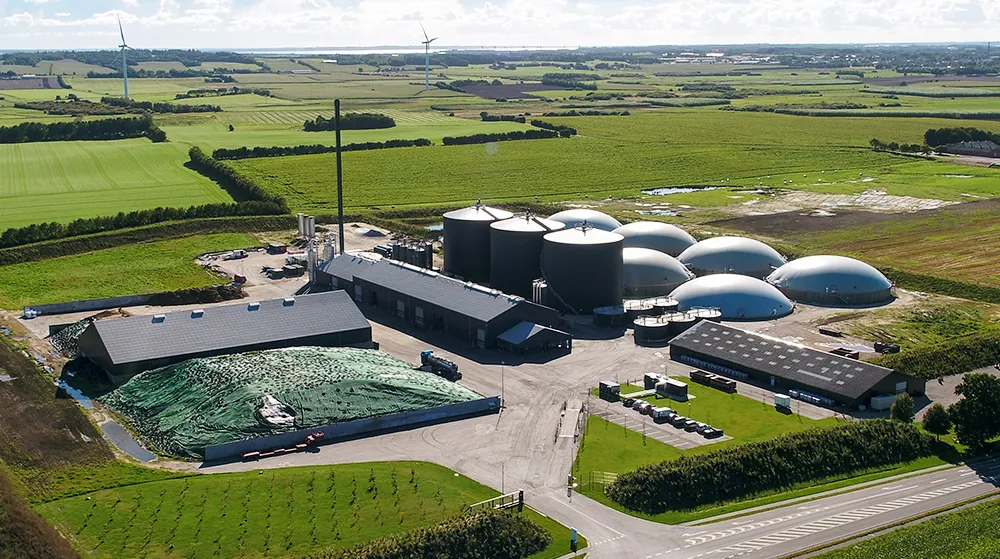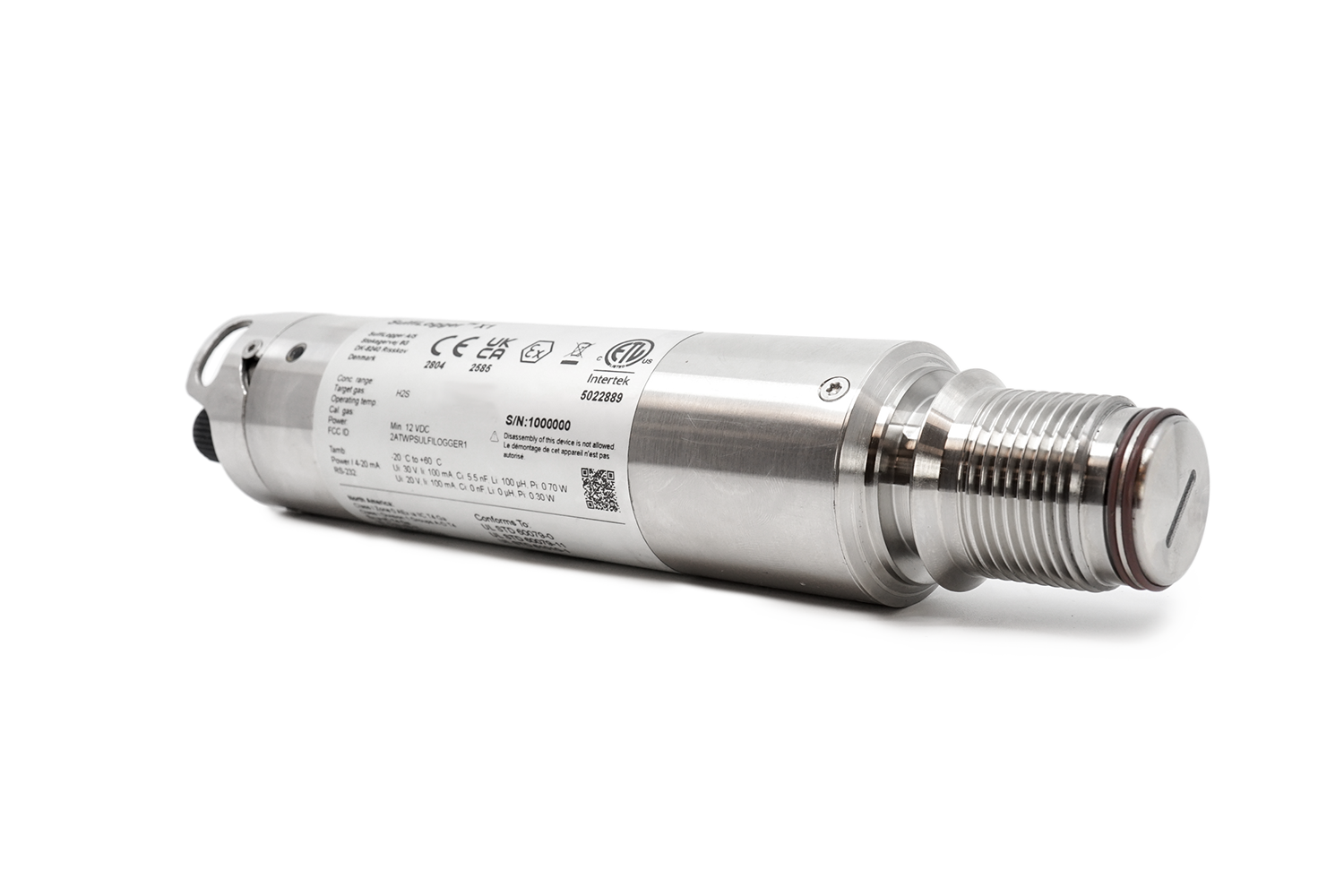Case study
Biogas plant improves carbon filter performance using H2S data
Vesthimmerland Biogas sought an automated rather than manual H2S monitoring setup to optimize filter performance and protect plant equipment. This was achieved using two SulfiLogger™ H2S sensors installed before and after carbon filters in the upgraded biomethane stream. This approach enabled real-time tracking of filter performance, while also boosting the operator’s confidence to perform other plant optimizations.
Background
Hydrogen sulfide (H2S) poses a challenge in biogas affecting both equipment lifespan and process efficiency concerns. However, Biogas operators often struggle to get the H2S insights that are needed to perform the necessary optimizations because the harsh nature of biogas operations are challenging to existing H2S monitoring solutions. Real-time data on H2S levels near critical desulfurization processes are essential for making the necessary adjustments and for understanding both peaks and trends in H2S levels.
Challenge
Vesthimmerland Biogas, an upgrading biogas plant supplying renewable natural gas to the Danish natural gas network, encountered challenges caused by a reliance on manual H2S grab sampling as a source for process control optimizations.
Operations Manager Flemming Nielsen highlighted the difficulty:
“We used to do tube measurements if we felt something was suboptimal in the process, but it was too time-consuming and expensive to do many times in a day. With this approach, we couldn’t capture the impact of changing the gas flow, temperature, and other parameters”.
This sporadic approach hampered performance optimization, necessitating an automated and continuous H2S monitoring setup.
Sensor setup at Vesthimmerland Biogas
The two SulfiLogger™ sensors are installed directly in-pipe in the wet biogas i the upgraded biomethane stream before and after the activated carbon filter setup.
Vesthimmerland Biogas has a total of 4 SulfiLogger™ sensors installed. The two other sensors – indicated by the red dots in the illustration – are used for monitoring H2S emissions in the CO2 discharge stream and prevent odor complaints and external odor tests. This application is explained in a separate case story by SulfiLogger.
Solution
To optimize the H2S monitoring setup, Vesthimmerland Biogas choose to install two SulfiLoggerTM H2S sensors. The sensors were installed on the upgraded biomethane stream, measuring H2S levels immediately before and after an activated carbon filter setup. Installed inline, they continuously monitored in wet and anoxic conditions directly in the pipe, thereby eliminating the need for sample conditioning such as drying and filtering.
Integrated into the existing SCADA system via a 4-20 mA loop power connection, the sensors were calibrated by local operators every three months following the manufacturer’s specifications for optimal accuracy. Prior to calibration, the sensors were cleaned with water.
Results
Following the installation of the SulfiLoggerTM H2S sensors, Vesthimmerland Biogas saw numerous benefits.
Real-time data facilitated timely adjustments, safeguarding critical process equipment from H2S spikes.
Additionally, the sensors enabled precise monitoring of the performance of the carbon filter setup, ensuring filters were cleaned in a timely manner and not changed prematurely.
Flemming Nielsen emphasized this newfound confidence in process optimization:
“When filling a tank and displacing gas, we can track H2S levels in real-time. It helps us identify changes, like stirring, and adjust gas mixtures to maintain steady H2S levels through filters. We’ve also seen how long we can run the filter with the same agent. Without real-time H2S data, these optimizations would be challenging.”
Finally, by moving away from manual grab sampling to an automated monitoring setup with SulfiLoggerTM H2S sensors, Vesthimmerland Biogas freed up valuable time previously consumed by labor-intensive sampling processes. This allowed the plant operators to focus their energy on the important optimizations tasks.

Vesthimmerland Biogas
Vesthimmerland Biogas supplies renewable natural gas to 18,000 households, handling 275,000 tons of biomass annually.
The plant is a biogas upgrading plant, where CO2 is removed from the biogas and the upgraded biomethane is supplied to the nationwide Danish natural gas grid.
The plant uses a thermophilic process and uses various feedstock including manure, energy crops, and residual industrial products.
Further readings
Vesthimmerland Biogas has 2 additional SulfiLoggerTM H2S sensors installed for optimizing the performance of the plant’s activated carbon filter setup.
Want to know more?
Do you want to hear more about the benefits of monitoring H2S at the biogas plant?


